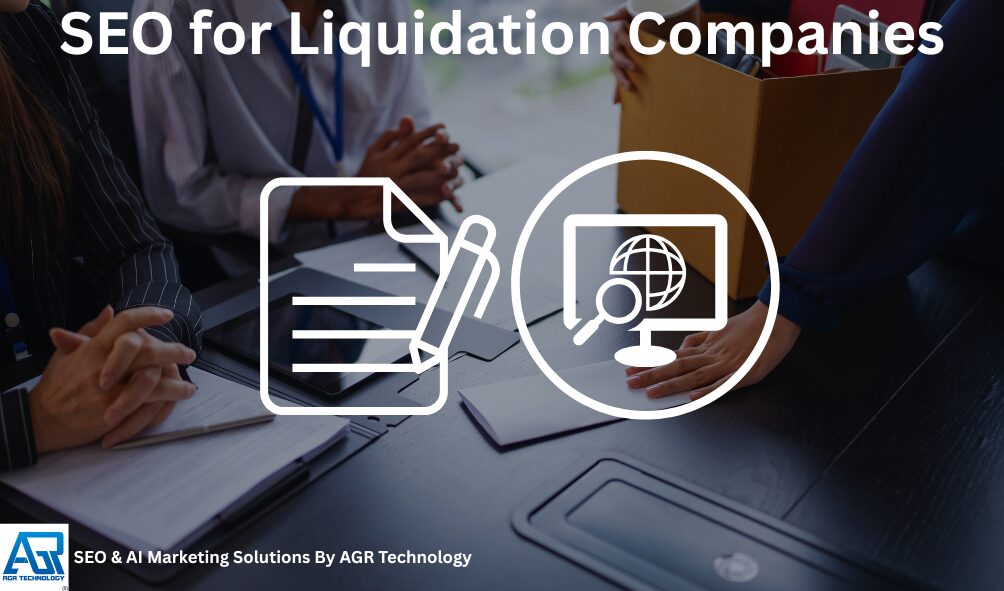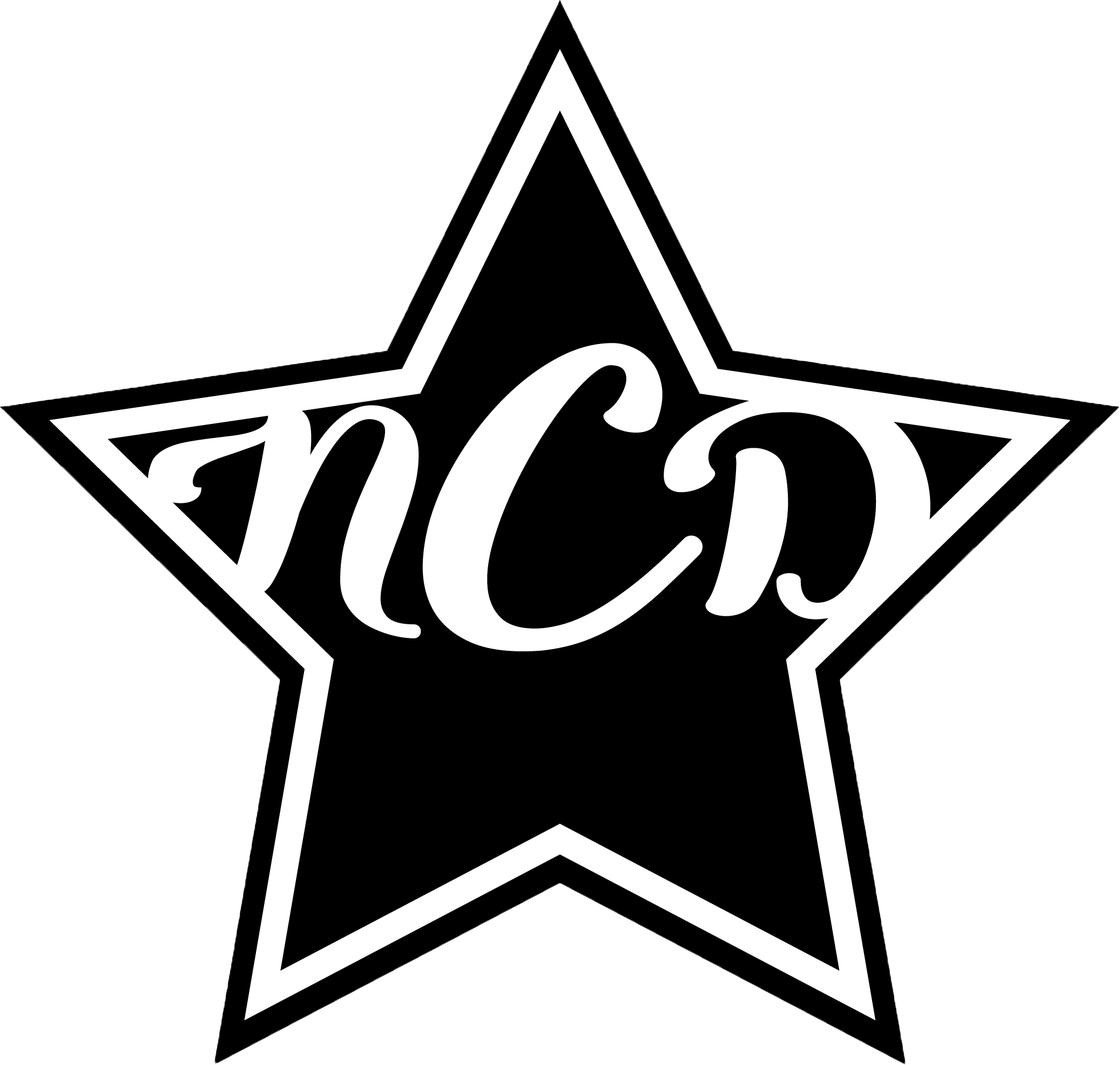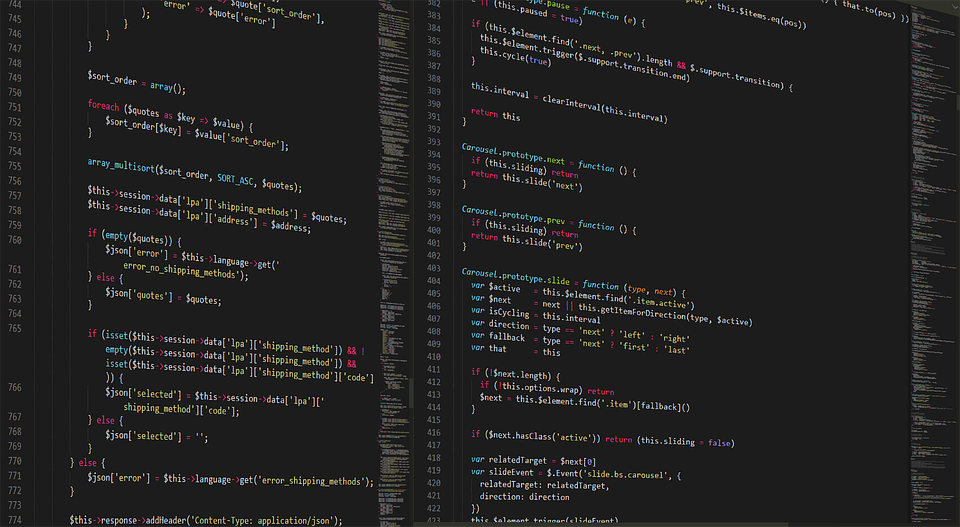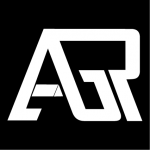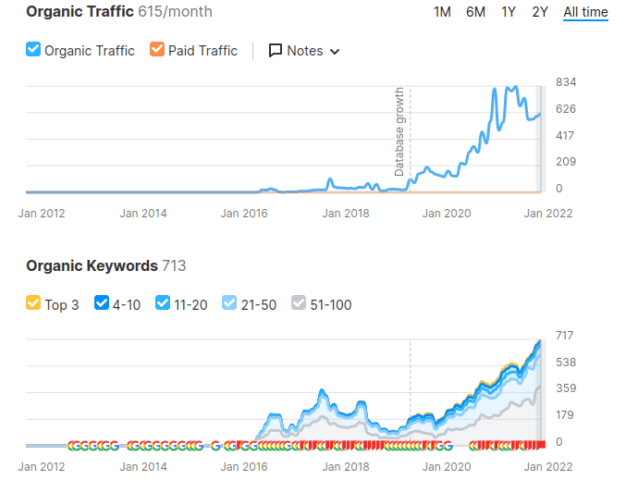Liquidation moves fast. If buyers can’t find us online your firm can lose deals. SEO helps your firm show up when motivated buyers search for pallets auctions surplus or closeouts. We can turn search intent into calls bids and cash flow.
In this guide we focus on tactics that fit liquidation teams. We align keywords with lot types and buyer needs. We optimize Google Business Profile and local pages for yard visits and pickup leads. With the right SEO plan we will help your firm connect with the right customers at the right time.
Book a free consultation call with AGR Technology to see how we can help scale your brand with proven SEO strategies
Reviews from some of our happy customers:
Supporting businesses of all sizes to get ahead with digital solutions
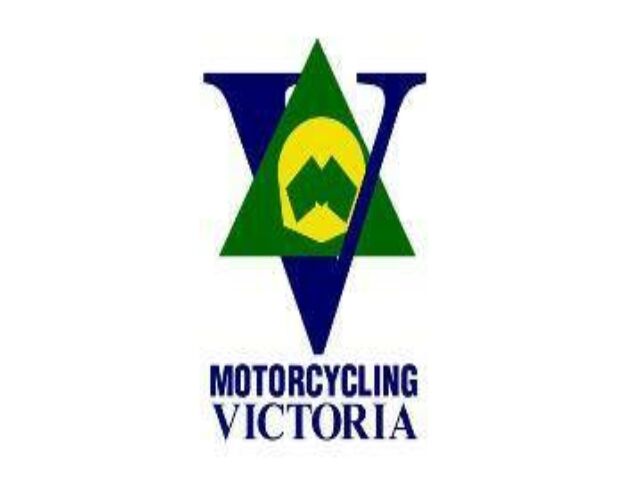
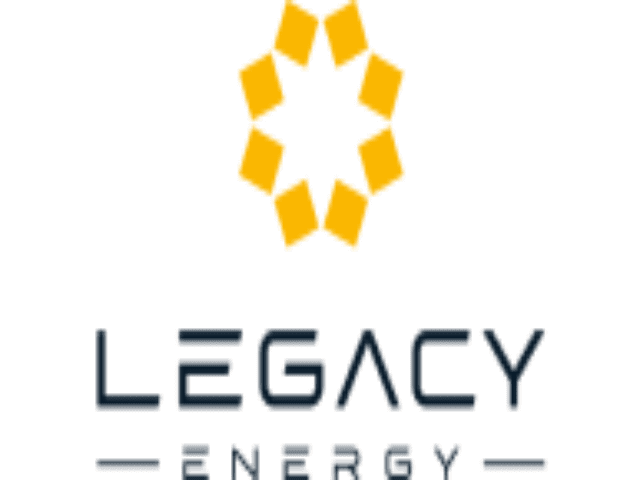
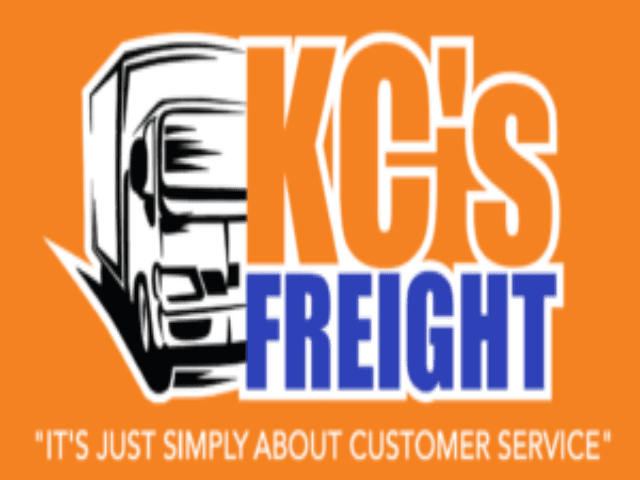

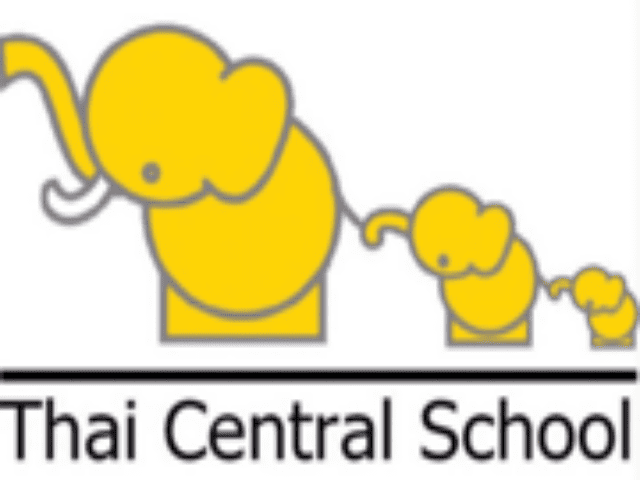
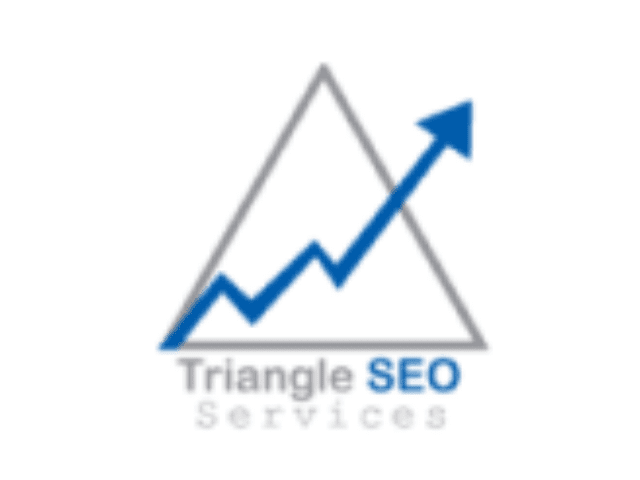
Why work with us?
A snapshot of our results
Understanding SEO For Liquidation Companies

We align search strategy with liquidation buyer intent across pallets, auctions, surplus, and closeouts. We focus on motivated B2B buyers and trade-only resellers who search by lot type, condition, quantity, and location. We structure content, inventory, and location signals so buyers find the right lots fast and convert without friction.
How buyers search and where we focus
- Target: target high-intent terms like liquidation pallets, wholesale pallets Sydney, auction surplus Melbourne, salvage merchandise Brisbane, reverse logistics lots, and closeout deals near me
- Map: map modifiers like brand, category, condition, MOQ, and postcode to filters, FAQs, and lot pages
- Cover: cover national and local SEO with city landing pages, service areas, and Google Business Profile
- Capture: capture B2B demand via schema markup, inventory feeds, and lead forms with price on request
Book a strategy call with AGR Technology to scope keywords by category and city.
Core SEO elements for liquidation teams
- Optimize: optimize category pages for pallets, truckloads, mixed lots, and shelf pulls with clear specs, photos, and FAQs
- Publish: publish inventory pages with structured data like Product, Offer, and ItemCondition per Google Search Central, https://developers.google.com/search/docs/appearance/structured-data/product
- Build: build local landing pages for each warehouse or pickup point with NAP, service radius, and embedded directions
- Enhance: enhance Google Business Profile with categories like Liquidator, Wholesaler, Auction house, plus products and updates
- Strengthen: strengthen E‑E‑A‑T with team bios, ABN, insurance details, chain of custody notes, and buyer safeguards
- Consolidate: consolidate duplicates, expired listings, and thin content with redirects and automated archival rules
- Improve: improve Core Web Vitals on mobile templates per Google guidance, https://developers.google.com/search/docs/appearance/page-experience
- Integrate: integrate review capture and UGC for lots, carriers, and pickup locations with moderation and response playbooks
Request a quote from AGR Technology for technical SEO and schema deployment.
Information architecture for fast lot discovery
- Group: group lots by product family, brand, condition grade, and location so filters mirror buyer language
- Create: create evergreen guides like pallet conditions A‑D, auction bidding rules, and freight options with compliance notes
- Link: link related lots, accessories, manifests, and safety data sheets for deeper browsing
- Generate: generate city pages like liquidation pallets Sydney, Brisbane surplus auctions, and Adelaide closeout sales with unique stock examples
Ask AGR Technology to map your sitemap, filters, and internal links around buyer journeys.
Structured data and feeds that surface inventory
- Mark: mark lots with Product, Offer, AggregateOffer, ItemCondition, and FAQPage
- Tag: tag brand, GTIN where available, quantity per pallet, unit mix, MSRP reference, and pickup postcode
- Automate: automate JSON‑LD from your inventory system, then validate in Google Rich Results Test, https://search.google.com/test/rich-results
- Submit: submit XML sitemaps for categories and lots, plus Merchant Center feeds when appropriate for visibility
We implement schema and feeds end to end at AGR Technology.
Local SEO for warehouses and pickup points
- Claim: claim and verify Google Business Profile per site, then align NAP across citations
- Add: add service areas, pickup hours, access notes like forklift on site, and holiday hours
- Post: post weekly with new pallets, auction dates, and high demand categories
- Collect: collect reviews from verified trade buyers, then respond with specifics about lots and resolutions
Book a local SEO tune‑up with AGR Technology to boost map pack visibility.
Content that converts trade buyers
- Answer: answer common questions on manifests, returns, salvage grading, warranty, and freight insurance
- Show: show inspection photos, videos, and manifest samples for transparency
- State: state MOQs, payment terms, pallets per truck, and pickup instructions with clarity
- Add: add compliance details for batteries, electronics, and hazardous goods disposal with links to regulators
We craft conversion content backed by industry standards at AGR Technology.
Measurement and revenue tracking
We tie SEO to stock movement and cash flow, not vanity metrics. We collect clean data across leads, bids, inspections, and pickups, then report by category and location.
| KPI | Primary source | Conversion action |
|---|---|---|
| Qualified lead volume | CRM and form tracking | Quote request, lot inquiry |
| Auction registrations | Auction platform events | Bid signup, bidder verification |
| Lot view to inquiry rate | Web analytics with events | Call click, email click, form send |
| Local actions | Google Business Profile insights | Calls, direction requests |
| Stock turnover time | Inventory system | Posted to sold duration |
Ask AGR Technology to implement analytics, call tracking, and revenue attribution.
Compliance, trust, and risk reduction
- Disclose: disclose condition grading, salvage notes, and any legal restrictions for resale
- Provide: provide manifests or approximations with ranges when exact counts vary
- Explain: explain buyer protection, dispute steps, and inspection options in plain language
- Secure: secure payment and account flows with MFA and PCI compliant gateways
Speak with AGR Technology about policy pages, UX safeguards, and trust badges.
Mapping The Liquidation Buyer And Seller Journey

We map how buyers source lots and how sellers exit stock, then we align SEO, content, and UX to reduce friction. We connect keywords to actions across discovery, evaluation, and conversion.
Key Search Intents To Target
We target intents that match how buyers and sellers search, then we route each to the right page type.
- Buy pallets and lots intent
- Capture queries like “liquidation pallets near me”, “wholesale liquidation lots”, “job lot electronics”, “unmanifested pallets”
- Build category and inventory pages with product schema, lot attributes, location, freight options
- Surface trust signals like inspection photos, grading, return policy, ABN, reviews
- Invite action with clear CTAs like Request a manifest, Get freight quote
- Auction and timed sale intent
- Capture queries like “liquidation auction Sydney”, “surplus auction online”, “clearance auction dates”
- Build auction hub pages with calendar, locations, reserve notes, buyer fees, terms
- Surface countdown timers, bid increments, registration steps, payment methods
- Invite action with CTAs like Register to bid, Set lot alerts
- Local warehouse pick-up intent
- Capture queries like “warehouse clearance Melbourne”, “pallet pick-up Brisbane”, “near me” variations
- Build Google Business Profile with categories like Liquidator and Warehouse, service areas, inventory photos
- Surface NAP consistency, opening hours, dock access, safety rules, parking
- Invite action with CTAs like Book pick-up window, Call the warehouse
- B2B supply and disposal intent
- Capture queries like “business liquidation buyers”, “reverse logistics partner”, “sell surplus inventory fast”
- Build selling pages with intake form, SKU volume ranges, compliance, NDAs, data destruction
- Surface service levels, time to offer, payout options, chain of custody
- Invite action with CTAs like Get a purchase offer, Schedule an intake
- Compliance and due diligence intent
- Capture queries like “manifest example”, “graded returns A B C”, “buyer terms and fees”
- Build learning pages with glossaries, grading charts, fee tables, sample manifests
- Surface FAQ snippets, downloadable PDFs, policy docs
- Invite action with CTAs like Download sample manifest, Ask a specialist
- Post-purchase support intent
- Capture queries like “freight quote pallets”, “forklift required”, “refund policy liquidation”
- Build support hub with shipping rules, liftgate notes, insurance, dispute steps
- Surface contact pathways, SLAs, response times
- Invite action with CTAs like Get shipping rate, Open a ticket
We back this structure with technical SEO. We add Product and ItemList schema for lots, FAQ schema for policies, and LocalBusiness schema for locations per Google Search Central. We track conversions tied to quote requests, bid registrations, and warehouse calls.
AGR Technology handles strategy, build, and tracking end to end. Book a quick strategy call to map your buyer and seller journey.
Seasonal And Market-Driven Demand Shifts
We align pages and inventory visibility to real cycles across retail, wholesale, and insolvency.
- Plan EOFY liquidation cycles
- Target queries for “EOFY clearance”, “stocktake sale pallets”, “overstock EOFY”
- Publish time-boxed landing pages per city, add dates, and lot themes like apparel, electronics, tools
- Update Google Business Profile posts with dates and featured lots
- Launch remarketing to past bidders and pallet buyers
- Catch post-peak returns waves
- Target “customer returns pallets”, “graded returns electronics”, “January liquidation”
- Expand returns categories with grading A to D, testing notes, R2/ISO mentions where relevant
- Add lots with manifests, photos, and video walkthroughs
- Push schema updates as lots drop to support fresh crawl
- Track retail calendar spikes
- Align around Boxing Day, Back to School, Mother’s Day, and spring clean periods
- Create intent pages like “back to school laptops clearance”, “tools spring clean sale”
- Feature freight calculators and pick-up windows for fast turnover
- Use inventory alerts for subscribers by category
- Respond to insolvency and macro shifts
- Target “administration sale assets”, “liquidator auction”, “business closeout stock”
- Build rapid-response landing pages tied to sectors like hospitality, construction, eCommerce
- Add structured data for events and auctions to improve discovery
- Coordinate PR and digital PR to earn citations from industry media
- Optimize by location demand
- Mirror demand in Sydney, Melbourne, Brisbane, Adelaide, Perth with city pages
- Add local stock highlights, travel time, and pick-up constraints
- Track call volume, quotes, and show rates by warehouse
- Measure and reallocate budget
- Monitor Google Trends for categories like electronics pallets and apparel closeouts
- Map impression share and SERP features across categories
- Shift content, internal links, and crawl budget to fast-moving lots
AGR Technology connects your calendar, CRM, and stock system to search demand, then we ship landing pages, schema, and GBP updates on a live cadence. Talk to us to stand up a seasonal SEO plan that moves stock faster.
Keyword Research For Liquidation And Asset Recovery

We target buyer intent terms that move pallets and lots fast. We map queries to categories, location pages, and inventory listings for clean relevance.
Core Service And Niche Terms
We build a keyword set that mirrors how buyers search for stock, categories, and conditions.
- Focus: liquidation services, asset recovery, surplus inventory, wholesale pallets, auction lots, closeout sales, reverse logistics, plant and equipment, salvage stock
- Capture: “liquidation pallets”, “bulk wholesale”, “surplus electronics”, “returned goods”, “scratch and dent”, “bankruptcy liquidation”, “insolvency asset sale”
- Segment: retail returns, consumer electronics, PPE, tools, furniture, apparel, whitegoods, industrial, mining equipment
- Match: SKU terms, brand names, and model identifiers across inventory templates
- Align: category pages to broad terms, inventory pages to long-tail terms, FAQs to compliance and warranty terms
- Track: search terms and conversions in Google Search Console and Analytics 4 for ongoing expansion (Google Search Central, GSC help docs)
Act now, if you want buyers who are ready to purchase. Book a free keyword mapping session with AGR Technology, and get a draft term set by category and intent.
Local And Service-Area Modifiers
We attach location and service modifiers to match warehouse pick-up, freight zones, and auction hubs.
- Target: “liquidation Sydney”, “liquidation Melbourne”, “liquidation Brisbane”, “liquidation Perth”, “liquidation Adelaide”, “liquidation NSW”, “VIC liquidation”, “QLD surplus”, “WA asset recovery”
- Add: “near me”, “same-day pickup”, “warehouse clearance”, “B2B bulk”, “government auctions”, “court-appointed”
- Build: suburb clusters around depots and partner warehouses, for example Homebush, Dandenong, Archerfield, Welshpool, Wingfield
- Optimise: Google Business Profile categories, products, and inventory posts for each warehouse location (Google Business Profile guidelines)
- Structure: location pages with stock categories, pickup details, freight options, and bidding windows
- Localise: schema for LocalBusiness, Product, AggregateOffer, Auction, and FAQ to enhance discovery and conversions (Schema.org, Google Search Central)
Talk with us, if your depots cover multiple states. Book a quick discovery call with AGR Technology, and we’ll map modifiers to each warehouse and priority route.
On-Page SEO Essentials For Liquidation Websites

On-page SEO for liquidation websites targets buyer intent and fast lot discovery. We align product data, location signals, and trust elements to convert clicks into bids and calls.
Service Pages: Business, Asset, And Estate Liquidation
Build service pages that match how buyers and sellers search for liquidation services.
- Map intent keywords, then group by use case
Examples: business liquidation, asset recovery, estate liquidation, receivership services, bankruptcy sales, surplus inventory removal, reverse logistics
- Structure sections, then mirror language buyers use
Examples: truckload pallets, wholesale lots, closeout auctions, salvage stock, overstock, shelf pulls
- Add conversion blocks, then reduce friction
Examples: instant quote forms, click to call, auction alert signup, warehouse viewing request, pick up and delivery options
- Publish transparent detail, then answer compliance questions
Examples: manifests, inspection reports, condition grades, MSRP reference, reserve price, buyer fees, payment terms, disposal and data security notes
- Link related categories, then keep navigation shallow
Examples: pallets by category, pallets by brand, auction calendar, clearance lots, returns and refurb
Service page copy essentials
- Lead with a buyer problem, then give a specific outcome
Example: Clear surplus inventory fast with compliant asset disposal
- Use benefit bullets, then back with proof cues
Example: photos, SKUs, grade summaries, timeframes
- Place primary CTA blocks, then repeat after specification sections
Example: Get a free SEO audit from AGR Technology
Book a quick strategy call with AGR Technology to plan your Business, Asset, and Estate Liquidation pages that convert.
Location Pages And NAP Consistency
Create location pages that rank for local liquidation buyers and trade sellers.
- Standardize NAP data, then match it across the web
Elements: business name, address, phone, hours, service area, warehouse access, parking, loading dock details
- Embed local context, then target warehouse intent
Elements: suburb names, landmarks, distance to major roads, collection rules, delivery coverage, cut off times
- Add inventory widgets, then refresh daily
Elements: newest pallets, featured truckloads, high demand categories, inspection slots
- Link to Google Business Profile, then mirror categories
Elements: liquidation service, auction house, warehouse, logistics service
- Mark up each location, then keep one location per page
Schema Markup, Compliance, And Trust Signals
Use structured data and compliance content to win visibility and confidence.
- Mark up inventory, then match visible page content
Schema: Product, Offer, AggregateOffer, AggregateRating, Review, ImageObject, BreadcrumbList, SearchAction
Fields to include: name, brand, images, condition, price, availability, lot size, location, shipping or pick up, return policy
- Mark up events, then use consistent dates and times
Schema: Event for auction previews and warehouse viewing days
- Publish compliance details, then place them near CTAs
Topics: data sanitisation, chain of custody, EPA and e waste handling, safety compliance, insurance, ABN and licensing
- Display proof, then keep it verifiable
Elements: inspection photos, grading methodology, sample manifests, buyer reviews, case studies, payment and fee breakdown
- Align with Google guidance, then test rich results
Sources: Google Search Central structured data guidelines, schema.org documentation
Structured data checklist for liquidation inventory
| Page type | Schema types | Key fields included |
|---|---|---|
| Category listing | ItemList, BreadcrumbList | itemListElement, position, name, url |
| Product or lot | Product, Offer, AggregateRating, Review | name, image, description, sku, gtin if known, price, priceCurrency, availability, condition, ratingValue, reviewCount |
| Auction event | Event, Organization, Place | name, startDate, endDate, location, organizer, url |
| Location page | LocalBusiness, Organization, BreadcrumbList | name, address, telephone, openingHours, geo, sameAs |
Ask AGR Technology to set up and validate your schema, then track rich result coverage with Search Console.
Technical SEO Foundations
Technical SEO for liquidation companies underpins fast discovery and higher-quality leads. We align crawl access, site speed, and indexation with live lots and auction timelines.
Site Architecture And Crawlability
Site architecture for liquidation SEO maps buyers and bots to lots, pallets, and auctions fast.
- Group categories, example apparel pallets, electronics pallets, tools, into clear hubs with indexable filters for brand, grade, location.
- Build siloed paths, example /auctions/, /pallets/, /surplus/, that link down to lots then back up via breadcrumbs.
- Create HTML sitemaps that list top categories and active auction events for deep crawl reach.
- Use breadcrumbs with schema, example BreadcrumbList, to improve understanding and sitelinks.
- Gate parameter bloat, example ?sort=, ?view=, ?currency=, with rel=canonical to the clean URL.
- Serve a clean robots.txt that allows /auctions/ and blocks internal search, example /search/.
- Publish XML sitemaps per type, example lots, categories, locations, and refresh every 24 hours for active stock.
- Link from the homepage to high-demand hubs, example return pallets Sydney, liquidation auctions Melbourne, to pass PageRank.
- Add consistent NAP to location pages and link them from the footer for crawl depth and local SEO.
- Audit crawl waste quarterly with server logs to remove dead parameters and thin archives.
Partner with AGR Technology for a technical audit, if crawl gaps or soft 404s cost crawl budget. Book a discovery call.
Sources: Google Search Central on crawl budget, breadcrumbs, canonicals, sitemaps.
Core Web Vitals And Mobile Experience
Core Web Vitals for liquidation SEO drive bid intent on mobile, where buyers scan lots on the go.
- Trim JavaScript by 30 to 50 percent for lot pages to improve LCP on 4G.
- Serve next-gen images, example WebP, AVIF, with fixed dimensions and lazy loading.
- Inline critical CSS under 14 kB to render above-the-fold lot photos and price blocks fast.
- Defer non-critical scripts, example chat, analytics, and batch third-party tags via a tag manager.
- Stabilise layout with reserved space for badges, example condition, grade, MSRP, to protect CLS.
- Cap TTI by pruning unused app code in React or Vue and serve pages with HTTP/2 or HTTP/3.
- Cache inventory thumbnails at the edge with a CDN that honours cache-busting on lot updates.
- Test mobile tap targets for bid, enquire, and directions buttons to meet 48 px minimums.
Request a Core Web Vitals tune-up from AGR Technology. Get a same-week plan and fixes.
| Metric | Target | Source |
|---|---|---|
| LCP | ≤ 2.5 s | Google Web Vitals |
| INP | ≤ 200 ms | Google Web Vitals |
| CLS | ≤ 0.10 | Google Web Vitals |
| Mobile-friendly | Pass | Google Mobile Guidelines |
Sources: Google Web Vitals, Page Experience guidance.
Handling Inventory, Pagination, And Indexation
Inventory indexation for liquidation SEO keeps live stock visible and stale stock out of the way.
- Use clean canonical URLs on lot pages and paginate categories with rel=next prev removed and strong internal links.
- Render server-side for core lot data, example title, condition, price, location, then hydrate enhancements client-side.
- Add Product, Offer, and ItemCondition schema on each lot with priceCurrency AUD and availability InStock or OutOfStock.
- Mark auction events with Event schema and include startDate and endDate to surface time-sensitive visibility.
- Keep sold lots live for 60 to 90 days with structured data availability OutOfStock and link to similar lots for continuity.
- Add noindex to faceted combinations that do not add value, example 5 plus stacked filters, to prevent thin pages.
- Insert view-all pages for key categories under 10,000 SKUs to help discovery if server capacity permits.
- Update XML sitemaps with lastmod on price or status change to prompt recrawl of hot stock.
- Enforce 301s from expired or renamed categories to the nearest live parent to conserve equity.
- Track index coverage for lots and categories in Search Console and fix soft 404s within 7 days.
Ask AGR Technology to implement structured data and indexation rules across your catalogue. Get a tailored playbook.
Sources: Google Search Central on structured data for products and events, pagination guidance, canonical best practices, index coverage.
Content Strategy That Attracts And Converts

Content strategy for SEO for liquidation companies focuses on buyer clarity and action. We map content to high intent searches and reduce friction to a bid or a call.
Educational Guides, Processes, And Timelines
Educational guides, processes, and timelines set buyer expectations fast. We explain how liquidation works for pallets, truckloads, and mixed lots. We define grading, manifests, reserves, and buyer premiums. We outline inspection steps, payment windows, pickup and freight options, and dispute resolution. We publish clear timelines for auction launch, close, and dispatch.
- Clarify processes. Publish step by step guides for auctions, fixed price deals, and expressions of interest.
- Standardise grading. Define A to D grades, return types, salvage notes, and warranty status.
- Visualise workflows. Use process maps for registration, verification, bidding, and collection.
- Anchor timelines. Display payment due dates, pickup windows, and storage fees by day count.
- Answer compliance. State GST handling, privacy, data security, and chain of custody details.
- Embed media. Add short explainer videos, checklists, and downloadable manifests.
Book a content planning session with AGR Technology. Get action focused buyer guides that rank and convert.
Inventory Listings, Category Pages, And FAQs
Inventory listings, category pages, and FAQs drive discovery for SEO for liquidation companies. We structure stock for fast scanning and richer snippets. We use consistent fields across all listings for brand, category, condition, MSRP, reserve, lot size, and location. We add product schema, item condition, and Offer data to improve visibility in search.
- Build category hubs. Group by verticals like electronics, apparel, tools, home goods, and grocery.
- Optimise filters. Enable filters for condition, price range, location, pallet count, and auction end time.
- Standardise titles. Lead with category, brand, grade, and quantity for each lot.
- Strengthen FAQs. Address shipping, inspection, pallet breakdowns, forklift access, and insurance.
- Reduce friction. Surface pickup instructions, dock hours, and ID requirements on every page.
- Connect context. Link related categories, nearby warehouses, recent wins, and seller profiles.
Ask AGR Technology for an inventory SEO audit. Get clean data models, fast filters, and schema that attracts ready buyers.
Case Studies, Testimonials, And Proof Elements
Case studies, testimonials, and proof elements build trust in liquidation SEO. We showcase real outcomes that matter to buyers and sellers. We highlight faster stock turns, higher recovery rates, and repeat buyer growth. We back claims with before and after search metrics and CRM tracked revenue from organic leads.
- Prove outcomes. Share time to sell, bid counts per lot, and recovery versus guide price.
- Validate quality. Include inspection photos, video walkarounds, and third party grading reports.
- Quote customers. Feature verified testimonials from wholesalers, exporters, and marketplace buyers.
- Show transparency. Display live reviews, dispute resolution stats, and on time pickup rates.
- Add credentials. Present licenses, memberships, WHS policies, and insurance coverage.
- Track signals. Attribute leads with UTM tags and record conversion events for bids, calls, and visits.
Speak with AGR Technology about building conversion proof. Secure case studies and review flows that turn search traffic into bids and buys.
Local SEO For Liquidation Companies

Local buyers search for pallets, auctions, and surplus near them. We optimise your local presence so nearby buyers find, call, and visit your warehouse fast.
Google Business Profile Optimization
We turn your Google Business Profile into a lead engine for liquidation, auctions, and closeouts.
- Add core details, categories, and service areas
- Primary category, Liquidator
- Secondary categories, Auction house and Warehouse
- Service areas, metro suburbs and regional zones
- NAP data, exact match across site and citations
- Upload proof, images and videos
- Exterior signage, warehouse frontage, loading docks
- Interior racking, pallets, manifests, inspection bays
- Team photos, safety gear, forklifts in use
- Short clips, timed auctions and pickup process
- Set conversion actions
- Call tracking, call history, and time of day routing
- Quote button, UTM tagged to CRM
- Directions clicks, pinned to the correct entrance
- Publish high intent content
- Posts, weekly pallet drops and auction dates
- Products, top categories like electronics pallets and apparel lots
- Offers, EOFY clearance and bulk buyer discounts
- Add structured data and local links
- LocalBusiness schema, warehouse geo and opening hours
- FAQ schema, inspections and manifests
- Internal links, location page and category hubs
Book a quick local SEO audit with AGR Technology. We map keywords to your GBP, categories, and location pages, then kick off content and tracking.
Sources
- Google, Improve your local ranking on Google, https://support.google.com/business/answer/7091
- Google, Guidelines for representing your business on Google, https://support.google.com/business/answer/3038177
Reviews, Reputation, And Local Citations
We build trust where buyers decide, in reviews, citations, and local marketplaces.
- Request reviews with proof prompts
- Ask for details, quality grades and manifest accuracy
- Tag services, pallet inspection and auction pickup
- Link to GBP, job ticket, or packing slip QR
- Respond fast with specifics
- Confirm lot IDs and pickup times
- Offer remedy paths, regrade or partial credit on verified defects
- Escalate privately after reply, keep facts in public view
- Seed FAQs in reviews
- Mention suburbs, delivery windows, forklift access
- Note payment terms, ABN invoices and GST
- Add safety notes, hi vis and enclosed shoes
- Build citations that match NAP
- Core, Google, Apple Maps, Bing Places
- Industry, Grays directory, AuctionZip, Gumtree business profiles
- Local, Yellow Pages AU, TrueLocal, Hotfrog, StartLocal
- Track impact and iterate
- Monitor rating trends, response times, and keyword lift
- Attribute calls, quotes, and directions from GBP
- Refresh photos and Posts when stock profiles change
Book reputation management with AGR Technology. We set compliant request flows, unify NAP data, and push category keywords into reviews without spam.
Stats and references
| Metric or finding | Value | Source |
|---|---|---|
| Local pack influences, proximity prominence relevance | Core factors | Google Support, Improve your local ranking |
| Consumers who trust businesses more with owner responses | 88% | BrightLocal Local Consumer Review Survey 2024 |
| Primary category weight in local rankings | High | Whitespark Local Search Ranking Factors 2023 |
| Consistent NAP across citations linked to better visibility | Supported | Moz, Local Search Ranking Factors summary |
Sources
- BrightLocal, Local Consumer Review Survey 2024, https://www.brightlocal.com/research/local-consumer-review-survey/
- Whitespark, Local Search Ranking Factors 2023, https://whitespark.ca/local-search-ranking-factors/
- Moz, Local SEO learning hub, https://moz.com/learn/seo/local
Talk to AGR Technology about a reviews and citations sprint. We draft templates, integrate QR requests, and clean duplicates so your map pack presence drives bids and calls.
Link Building And Digital PR

Link building and digital PR drive high intent traffic for liquidation services and auctions. We earn relevant .au links that boost category pages, inventory hubs, and local warehouse profiles.
Industry Partnerships And Directories
Partnerships anchor authority for liquidation companies in Australia. We target procurement, logistics, and retail associations that buyers already trust.
- Prioritise trade bodies
- Target ARA, NORA Network, SCLAA, GS1 Australia
- Request member listings, sponsor pages, and event speaker bios
- Link to category hubs like surplus pallets, auction events, and truckload lots
- Capture supplier and marketplace links
- Create a partner page with brand logos and case study anchors
- Request reciprocal supplier profiles on OEM, freight, and 3PL partner sites
- Add listings on IndustrySearch, Yellow Pages, LocalSearch, TrueLocal, Hotfrog
- Standardise citations for local SEO
- Align NAP across Google Business Profile, ABN register references, and directories
- Embed local categories like liquidation services, auction house, and wholesaler
- Use UTM tags to track calls and quote requests from profiles
- Optimise anchor text safely
- Balance branded anchors and partial match terms like liquidation auctions Sydney, wholesale pallets Melbourne, surplus stock Brisbane
- Link deep to category hubs and location pages rather than the homepage
- Audit nofollow and dofollow ratios with risk flags for over‑optimisation
- Monitor outcomes with clear KPIs
- Track referring domains, link velocity, and assisted conversions in Analytics and Looker Studio
- Attribute inbound calls and bid registrations to source pages with call tracking
Table: Link and citation targets
| Metric | Target range per quarter |
|---|---|
| New referring domains | 15–30 |
| Authoritative .au links | 6–12 |
| Relevant directory listings | 8–15 |
| Press mentions | 3–6 |
| DR uplift | +5 to +10 |
Book a discovery call with AGR Technology to map partner outreach and directory placements for your warehouse locations.
Thought Leadership And Local Media Outreach
Thought leadership turns operational know how into newsworthy assets that earn links and buyer trust.
- Publish data led insights
- Release quarterly returns trend updates using ASIC insolvency statistics and ABS retail turnover data
- Visualise categories like consumer electronics, apparel, and homeware lots with recovery rate snapshots
- Host the dataset and charts on a media hub with embeddable assets and citation guidelines
- Respond to journalist requests
- Monitor SourceBottle, Medianet, and AAP for liquidation, auctions, and retail supply chain queries
- Offer practical quotes on grading standards, manifest accuracy, and compliance handling
- Maintain a press kit with spokesperson bios, high res images, and warehouse b roll
- Localise stories for city media
- Pitch inventory movement and employment impact to NewsLocal, ABC local radio, and city business press in Sydney, Melbourne, and Brisbane
- Tie angles to seasonality like post peak returns and EOFY clearance timelines
- Add geo pages for each story with warehouse photos and case outcomes
- Leverage case studies that rank
- Document lot size, SKU mix, inspection photos, and turnaround time
- Include buyer testimonials and star ratings with verifiable order IDs
- Mark up pages with Review, Product, and LocalBusiness schema for rich results
- Secure authoritative mentions
- Offer expert commentary for guides on liquidation process and auction bidding best practice
- Co author checklists with accountants or insolvency practitioners for credibility
- Reference ASIC and AFSA sources for accuracy
Schedule a quick chat with AGR Technology to plan a digital PR calendar and newsroom assets that attract journalists and buyers.
Analytics, Tracking, And ROI
![]()
We make SEO spend traceable for liquidation teams. We tie rankings and clicks to bids, calls, and booked inspections.
Lead Quality, Calls, And Form Attribution
We capture lead quality at the source. We tag calls, forms, and bids with stock category and location.
- Track call intents across pallets, truckloads, and mixed lots. For example warranty returns, shelf pulls, refurbished
- Tag forms with buyer type across resellers, exporters, and charities. For example ABN holder, marketplace seller, NGO
- Route events into GA4 with custom dimensions across lot_id, condition_grade, and warehouse_code
- Record inspection requests and bid submissions as conversions across category, brand, and reserve_status
- Connect phone call conversions via CallRail or Google Forwarding Numbers across ads, GBP, and organic (Google support docs: https://support.google.com/analytics and https://support.google.com/google-ads)
We score leads against inventory margins. We push scores into CRM stages across qualified, quoted, and won.
- Capture bid value and MOQ as first party data through hidden fields on inventory pages
- Append GCLID and UTM data to contacts for multi touch paths across Search, GBP, and email
- Fire Enhanced Conversions for web for higher match rates across signed in buyers (Google Ads help: https://support.google.com/google-ads)
- Sync outcome events from CRM to GA4 for closed loop attribution across revenue and profit
We make phone tracking reliable. We use dynamic number insertion on inventory, category, and location pages. We log call duration and outcome across answered, voicemail, and missed. We mark sales calls over 120 seconds as high intent.
Goal Setting, Dashboards, And Iteration
We set goals that match liquidation realities. We track speed to cash and cost per moved lot.
- Define primary conversions across bid_submitted, inspection_booked, and call_120s
- Define secondary conversions across catalogue_downloaded and watchlist_added
- Map values to conversions using average margin per category across apparel, electronics, and home
We publish live dashboards in Looker Studio. We segment by warehouse, category, and channel.
- Visualise lead volume and win rate by lot size across pallet and truckload
- Monitor time to sale across 3, 7, and 14 days
- Compare organic vs local pack vs ads by cost per enquiry and cost per sale
- Surface search terms from Search Console for high intent queries across liquidation pallets Sydney and surplus auctions Melbourne (Google Search Central: https://developers.google.com/search)
We iterate fast. We run monthly tests on SERP snippets, category copy, and internal links.
- Test schema fields across condition, item_count, and lot_location for richer results
- Test call CTA placement above fold on mobile inventory pages
- Test city modifiers on location hubs across Sydney, Melbourne, and Brisbane
- Reallocate budget toward sources with higher ROAS across local SEO and auctions email
KPIs and targets
| KPI | Target | Notes |
|---|---|---|
| Qualified lead rate | ≥ 40% | Calls over 120s or forms with ABN and budget captured |
| Cost per qualified lead | AUD 80 to 150 | Varies by category and metro market |
| Bid submission rate | 8% to 15% | Percentage of inventory sessions that submit a bid |
| Time to sale | ≤ 7 days | From publish to cleared payment for pallets and mixed lots |
| ROAS from organic | ≥ 6.0x | Revenue attributed by GA4 and CRM deal won status |
| LTV to CAC | ≥ 4.0 | Based on repeat buyers over 180 days |
We keep data clean. We filter staff traffic. We dedupe events. We align currencies to AUD. We use consent mode where required.
Ready to track real outcomes not vanity metrics. Book a call with AGR Technology to set up GA4, call tracking, and liquidation SEO dashboards. We can migrate tracking, map inventory events, and prove ROI across your pallets and auctions.
Conclusion
SEO is how we turn buyer intent into cash flow. When we align search journeys with real stock and clear actions we move assets faster and at better margins.
The next step is focus. Choose a 90 day plan. Prioritize the work that shortens time to bid and time to cash. Measure what moves lots. Cut what stalls. Keep learning from demand signals and stay agile as markets shift.
If you want a partner we can map the path build the roadmap and own delivery. We will set tangible targets track every action to revenue and keep you ahead of cycles. Reach out and let us help you turn search into sold stock at scale.
Frequently Asked Questions
Why is SEO crucial for liquidation businesses?
SEO helps motivated buyers find your pallets, auctions, and closeouts fast. With the right keywords, optimized local pages, and structured data, you rank for high-intent searches and drive bids, calls, and inspections—turning visibility into quick stock movement and better margins.
Which keywords should liquidation teams target?
Focus on high-intent terms like “liquidation pallets near me,” “surplus auctions,” “wholesale returns,” “closeout lots,” and category-level phrases (electronics, apparel, tools). Include location modifiers, brand names (when allowed), lot conditions, and volume signals to match buyer intent.
How do Google Business Profiles help liquidation companies?
An optimized GBP boosts local visibility for searches like “liquidation warehouse near me.” Add accurate NAP, categories, services, inventory highlights, photos, FAQs, products, and posts. Encourage reviews, track calls, enable messaging, and keep hours and promotions current.
What local SEO elements matter most?
Consistent NAP, location pages with unique local content, embedded maps, service areas, warehouse photos, and localized FAQs. Use LocalBusiness schema, build citations, gather reviews, and link from local partners and directories to strengthen geographic relevance.
How should we optimize category pages?
Use clear titles, filters, and sorting for conditions, brands, lots, and pallet sizes. Add unique copy answering buyer questions, internal links to key categories, and schema where applicable. Keep pages fast, crawlable, and focused on discovery and conversion.
How can structured data improve inventory visibility?
Apply Product or AggregateOffer schema for lots and pallets, Event schema for auctions, and LocalBusiness for locations. Include price, condition, availability, images, lot size, pickup details, and auction dates. This helps rich results and faster buyer decision-making.
What content converts liquidation buyers quickly?
Create inventory listings with inspection photos, condition grades, manifests, pickup terms, and timelines. Publish FAQs, shipping policies, grading standards, and payment steps. Add case studies and testimonials to prove outcomes and reduce hesitation.
How do we align with buyer intent?
Map intent to page types: “auction today” to auction hubs, “pallets near me” to location pages, “surplus electronics lots” to category pages, and “how liquidation works” to guides. Answer time, price, condition, and logistics questions upfront.
What technical SEO basics should we prioritize?
Use clean architecture with category hubs, HTML sitemaps, XML sitemaps, and breadcrumb links with schema. Optimize crawlability, handle pagination, avoid thin duplicate pages, and keep internal linking strong from hubs to inventory and auctions.
How do Core Web Vitals affect conversions?
Faster load times and stable layouts reduce bounce and speed up bids. Compress images, lazy-load media, preconnect critical domains, minimize JS, and use CDN caching. Prioritize mobile performance where most quick buyers browse and act.
How should we manage inventory indexation?
Index live stock and evergreen categories. Use proper pagination (relational linking), canonicalize duplicates, and noindex stale or sold-out pages while providing “similar lots” links. Keep sitemaps fresh so search engines pick up new inventory quickly.
What trust signals matter most?
Detailed inspection photos, manifests, grading standards, compliance notes, return/payment terms, verified reviews, case studies, and clear warehouse details. Prominent contact info, licenses, and safe payment badges increase confidence and bid intent.
How do reviews impact liquidation SEO?
Reviews improve local rankings and conversion. Ask after successful pickups, include keywords naturally, and respond to all reviews. Showcase ratings on location and category pages with schema to earn stars and social proof in search results.
What pages should every liquidation site have?
Auction hub, key category pages, inventory listings, warehouse/location pages, services pages (buyouts, overstocks, returns), FAQs, about, testimonials/case studies, and contact. Each should include conversion blocks, trust elements, and relevant schema.
How can we use seasonality to move stock?
Plan pages and promos around retail cycles: post-peak returns, back-to-school, holiday clearances, EOFY. Update GBPs, run time-sensitive landing pages, refresh inventory highlights, and remarket to past buyers aligned with current demand.
What link-building strategies work best?
Pursue trade bodies, wholesale directories, auction platforms, logistics partners, local chambers, and industry blogs. Offer data-led insights, market reports, and expert commentary. Localize stories for city media and track links, referring traffic, and bids.
How do we track ROI from SEO?
Route calls, bids, form leads, and inspection bookings into GA4 with events and custom dimensions. Capture lead quality, call intent, and source/medium. Tie rankings and clicks to revenue outcomes and reallocate budget to the pages and channels that convert.
What conversion elements reduce friction?
Add sticky CTAs, click-to-call, auction countdowns, pickup windows, price/fees clarity, financing or payment options, trust badges, and live chat. Place these on category and inventory pages with fast-loading media and clear next steps.
Should we use FAQs on category and location pages?
Yes. Use FAQs to answer buyer-specific questions on shipping, grades, pickup rules, auction timing, and local policies. Mark up with FAQ schema to win more SERP space and reduce pre-bid uncertainty.
What’s the best way to structure navigation?
Group by product categories, conditions, industries, and auction types. Include “Auctions,” “Pallets,” “By Location,” and “How It Works.” Use breadcrumbs and internal links from hubs to listings, ensuring shallow click-depth for hot inventory.
How do we handle duplicate content across similar lots?
Write unique titles and snippets with brand, condition, lot size, and location. Use canonical tags when variants are minimal. Consolidate thin pages and provide robust filters on category pages to avoid near-duplicates.
Can thought leadership help attract buyers?
Yes. Publish market trends, recovery rate data, grading standards, and compliance guides. Contribute quotes to journalists, share success metrics, and host webinars. This earns authoritative mentions, links, and trust from serious buyers.
What on-page elements should every listing include?
Clear title with category/brand/condition, high-quality photos, lot size, manifest summary, reserve price or starting bid, pickup/ship terms, inspection availability, location, and compliant structured data. Finish with bold CTAs: Bid now, Call, or Book inspection.
How can remarketing support SEO?
Retarget visitors who viewed categories or lots with time-sensitive ads, back-in-stock alerts, and similar inventory. Sync with seasonality and use email or PPC to recapture high-intent traffic that discovered you via organic search.
Related content:

Alessio Rigoli is the founder of AGR Technology and got his start working in the IT space originally in Education and then in the private sector helping businesses in various industries. Alessio maintains the blog and is interested in a number of different topics emerging and current such as Digital marketing, Software development, Cryptocurrency/Blockchain, Cyber security, Linux and more.
Alessio Rigoli, AGR Technology
![logo-new-23[1] logo-new-23[1]](https://cdn-ihdfn.nitrocdn.com/eZVJvoSTyVixkEUySRKiaseNtUlmgCyu/assets/images/optimized/rev-d69570f/agrtech.com.au/wp-content/uploads/elementor/thumbs/logo-new-231-qad2sqbr9f0wlvza81xod18hkirbk9apc0elfhpco4.png)
